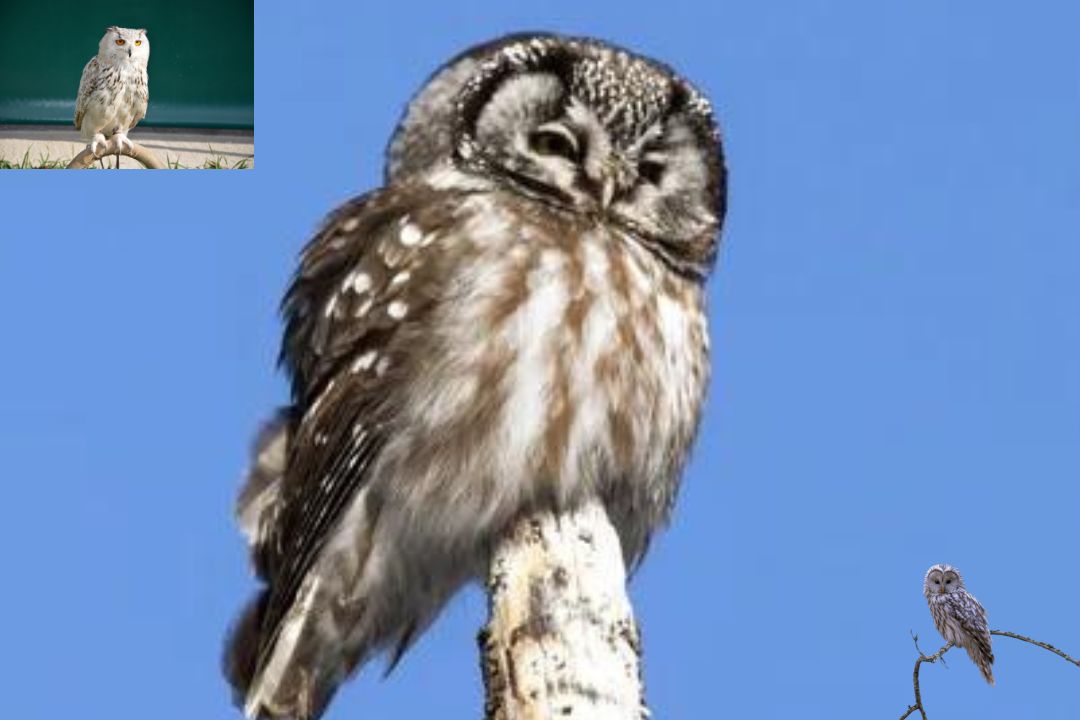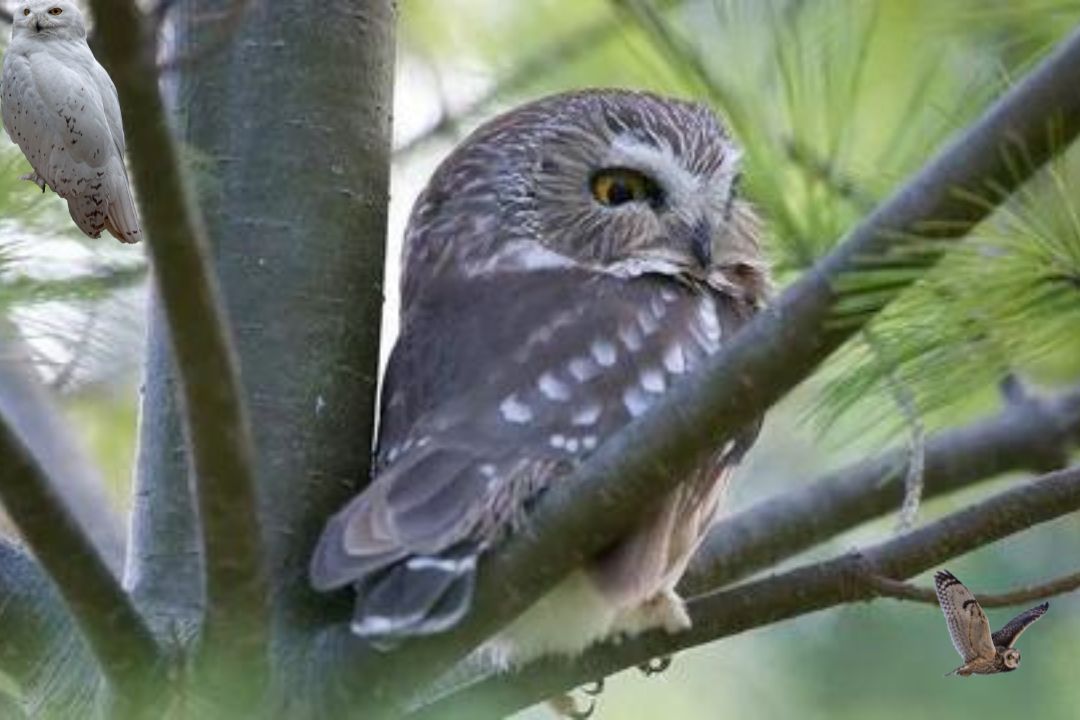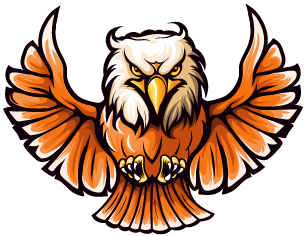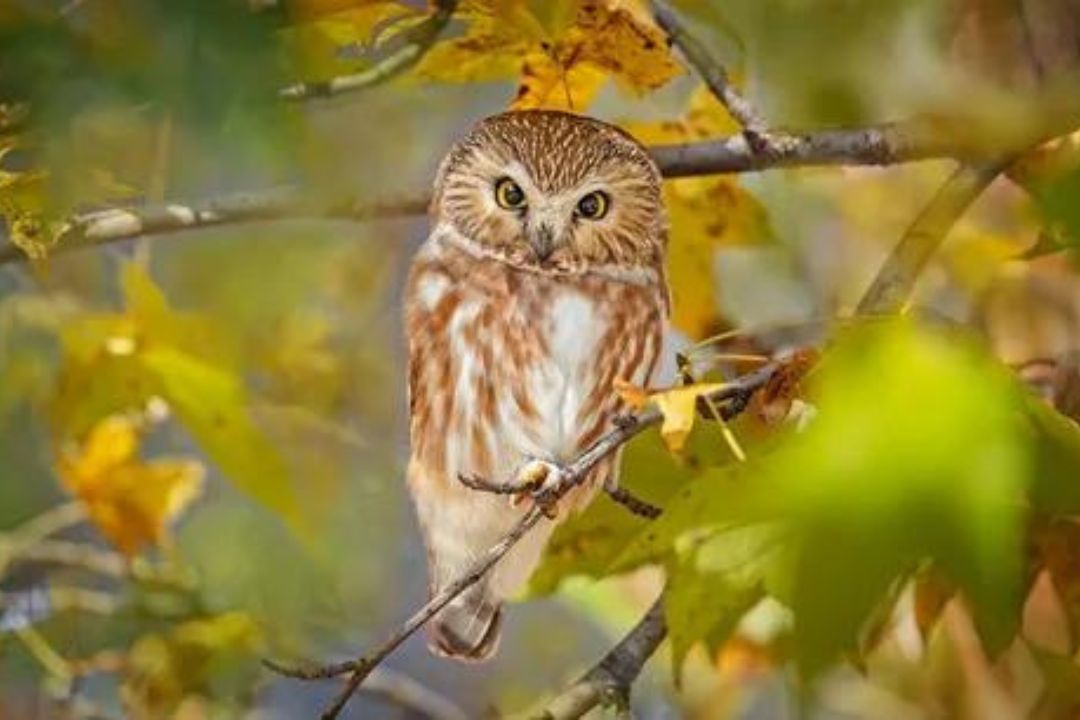The Boreal Owl: A Comprehensive
Look at a Mysterious Forest Dweller
Introduction
In the tranquil, shadowy domains of the boreal woods that stretch across North America and Eurasia, a little yet captivating avian species meanders. The Boreal Owl (Aegolius funereus) is a nighttime hunter with a novel mix of transformations that permit it to flourish in probably the most difficult conditions on The planet. With its downplayed tastefulness and tricky nature, the Boreal Owl stays one of the more confounding inhabitants of the northern woodlands. This article dives into the life and nature of the Boreal Owl, investigating its environment, conduct, diet, generation, and protection status.

Physical Characteristics
The Boreal Owl is a little, conservative owl with an unmistakable appearance that separates it from different owls. Grown-up Boreal Owls regularly measure between 21 to 28 cm (8.3 to 11 inches) long, with a wingspan of around 50 to 60 cm (20 to 24 inches). Their plumage is a delicate, mottled earthy colored that gives great disguise against the woods setting. The underside is delicately streaked, which helps separate the blueprint of the owl when it’s roosted among branches.
One of the most eminent elements of the Boreal Owl is its face. It sports a somewhat little, round face with an obvious white facial circle. This circle assists with piping sound straightforwardly to the owl’s ears, which are situated unevenly for predominant hear-able restriction. The eyes are huge and yellow, adjusted for low-light vision, fundamental for a nighttime tracker.
Habitat and Distribution
Boreal Owls are local to the boreal backwoods of the Northern Half of the globe. In North America, their reach stretches out from Gold country through Canada and into the northern pieces of the adjacent US, like the Incomparable Lakes locale and the northern Rockies. In Eurasia, their reach covers Scandinavia, Russia, and portions of northern Asia. These owls are regularly tracked down in coniferous woods, like tidy, fir, and pine woodlands, where they can track down more than adequate cover and plentiful prey.
During the rearing season, Boreal Owls lean toward full grown, thick woodlands with a blend of tree animal categories and an advanced understory. In the colder time of year, they might move to bring down rises or different backwoods types looking for food. Their natural surroundings inclination mirrors their requirement for a steady climate where they can without much of a stretch chase and find reasonable settling destinations.
Behavior and Adaptations
The Boreal Owl is a single and regional bird, generally dynamic during the evening. Its little size and mysterious tinge make it trying to recognize right at home. The owl’s hunting system depends vigorously on its intense hearing. It has particular quills and a facial plate that improve its capacity to find prey by sound alone, considerably under the front of obscurity.
Boreal Owls have adjusted to their nighttime way of life with a few special elements. Their eyes are adjusted for low-light vision, and their quiet flight assists them with moving toward prey subtly. The main edges of their wings have serrated feathers that decrease clamor during flight, a transformation urgent for a hunter that depends on shock to get its prey.
Throughout the cold weather months, when prey is less plentiful and temperatures are very low, Boreal Owls have adjusted by bringing down their metabolic rate. This permits them to save energy and make due in brutal circumstances. They are likewise known to enter lethargy, a condition of decreased physiological movement, to adapt to the virus.
Diet and Hunting
The eating regimen of the Boreal Owl principally comprises of little well evolved creatures, like voles, mice, and wenches. In certain locales, they may likewise take birds and bugs. Their hunting technique is fundamentally snare based. They roost quietly in a disguised spot and sit tight for the hints of likely prey. At the point when they recognize development, they dip down with noteworthy speed and accuracy.
The Boreal Owl’s eating regimen shifts fairly with the seasons. In the spring and summer, when prey is more plentiful and simpler to get, they might consume a more noteworthy assortment of little warm blooded creatures and bugs. Throughout the colder time of year, their eating regimen turns out to be more centered around little rodents, which are more dependable in cool circumstances.
Boreal Owls have been noticed storing food during seasons of overflow. They conceal excess prey in different areas, for example, tree limbs or hole, to get back to later. This conduct assists them with enduring periods while hunting is less effective.

Reproduction and Lifespan
The rearing season for Boreal Owls starts in pre-spring to spring early. Guys are known to be exceptionally regional and participate in vocal duels to guard their domain and draw in a mate. Their calls are a progression of delicate, melodic hoots that can continue significant distances.
Settling happens in tree cavities, deserted homes of different birds, or fake home boxes. The female regularly lays 3 to 7 eggs, which she broods for around 24 to 30 days. During this time, the male gives food and guards the domain. When the eggs hatch, the female keeps on focusing on the youthful while the male brings food.
The juveniles stay in the home for around 4 to 5 weeks before they are prepared to leave. Indeed, even subsequent to leaving the home, they keep on depending on their folks for food and security until they are completely free. Boreal Owls regularly arrive at sexual development at around one year old enough.
In the wild, the life expectancy of a Boreal Owl is around 2 to 4 years, however a few people can live longer, as long as 10 years or more. Their life expectancy is affected by different variables, including predation, food accessibility, and natural circumstances.
Conservation Status
The Boreal Owl is by and large viewed as a types of least worry by the Global Association for Preservation of Nature (IUCN). This status mirrors its somewhat steady populace and expansive circulation across its living space range. Nonetheless, in the same way as other species that possess remote or specific conditions, the Boreal Owl isn’t safe to natural changes.
Natural surroundings obliteration because of logging, mining, and different types of land improvement represents a critical danger to the Boreal Owl’s living space. As boreal woodlands are cleared or divided, the accessibility of reasonable settling destinations and prey can diminish, possibly influencing owl populaces. Moreover, environmental change represents a danger by modifying the accessibility of prey and the design of the owl’s territory.
Protection endeavors for the Boreal Owl incorporate observing populaces, safeguarding basic living spaces, and alleviating the effects of human exercises. Endeavors to moderate boreal backwoods and safeguard regular territories are vital for guaranteeing the drawn out endurance of this baffling owl.
Cultural Significance and Folklore
The Boreal Owl, while not as conspicuous in that frame of mind as some other owl species, holds a spot in different native customs and legends. In a few Local American societies, owls are viewed as images of shrewdness and secret. The Boreal Owl’s tricky nature and tormenting calls add to its relationship with the heavenly and the unexplored world.
In Scandinavian legends, owls are in some cases saw as signs or images of progress. Their presence in the thick, baffling woodlands of the north adds to their persona and social importance.
Additional Research and Future Directions
To completely get it and safeguard the Boreal Owl, a few areas of examination and protection center are fundamental:

Habitat Monitoring
Standard reviews and observing of Boreal Owl populaces and their territories are urgent for distinguishing changes and recognizing possible dangers. Utilizing advances, for example, satellite symbolism and acoustic observing can upgrade our capacity to follow populace elements and environment conditions.
Climate Change Studies
Examination into what environmental change means for boreal biological systems and the Boreal Owl explicitly is significant for creating versatile administration techniques. Studies ought to zero in on changes in prey accessibility, woodland structure, and temperature consequences for the owl’s physiology and conduct.
Human-Wildlife Conflict
Resolving issues connected with environment discontinuity and human infringement is imperative. Cooperative endeavors between traditionalists, nearby networks, and policymakers can assist offset human necessities with the protection of basic natural surroundings.
Public Awareness and Education
Expanding public mindfulness about the Boreal Owl and its part in the environment can cultivate more noteworthy help for protection endeavors. Instructive projects and effort drives can feature the significance of boreal timberlands and the need to safeguard them.
Research on Reproductive Success
Grasping variables that impact the regenerative outcome of Boreal Owls, for example, settling site accessibility and prey overflow, can illuminate preservation practices and environment the executives procedures.
Protection of Critical Habitats
guarantee that fundamental natural surroundings stay in salvageable shape. These safeguarded regions ought to incorporate a scope of woods types and conditions to help the owl all through its life cycle.
By zeroing in on these exploration and protection needs, we can upgrade how we might interpret the Boreal Owl and guarantee that people in the future have the chance to encounter and value this amazing bird.
Personal Reflection and Connection
The Boreal Owl, with its tricky appeal and variation to perhaps of the cruelest environment, welcomes us to ponder our relationship with the regular world. Seeing this owl in its local territory offers a brief look into a world that remains to a great extent immaculate by human hands — a sign of the excellence and intricacy that exists past our ordinary experience.
Associating with the Boreal Owl additionally features the significance of safeguarding these wild places for people in the future. Each locating of this secretive bird and every revelation about its life and propensities add to a more extensive comprehension of the normal world and our place inside it. As we proceed to investigate and safeguard the natural surroundings of such perplexing species, we additionally support our own feeling of miracle and obligation towards the climate.
All in all, the Boreal Owl isn’t simply a captivating animal categories by its own doing yet additionally an image of the more extensive biological complexities that characterize our planet. Through devoted examination, protection, and a developing appreciation for its job in the environment, we can guarantee that the Boreal Owl — and the boreal timberlands it occupies — keep on flourishing for a long time into the future.

n-Depth Look at Boreal Owl Ecology
To additionally see the value in the Boreal Owl’s job in its biological system, it’s fundamental to investigate its natural collaborations, occasional ways of behaving, and the more extensive ramifications of its presence in the boreal fronts.
Ecological Interactions
The Boreal Owl is a critical hunter inside its boreal woodland natural surroundings, assuming a pivotal part in managing the populaces of little vertebrates. By controlling rat numbers, the owl keeps up with natural equilibrium, keeping any one animal categories from turning out to be excessively prevailing. This savage job has flowing impacts all through the biological system, affecting plant networks and the overflow of other creature species.
Notwithstanding its job as a hunter, the Boreal Owl fills in as prey for bigger raptors and rapacious vertebrates. Species like the Incomparable Horned Owl (Bubo virginianus) and different enormous falcons might go after youthful or even grown-up Boreal Owls. This predation pressure keeps up with the unique harmony of hunter prey connections inside the woodland.
Besides, the Boreal Owl’s presence can influence the way of behaving of other backwoods creatures. For example, the owl’s hunting exercises might impact the scavenging examples of little warm blooded creatures and birds, prompting conduct variations because of predation risk. This transaction among hunter and prey epitomizes the complicated interdependencies inside the boreal woods environment.
Seasonal Behaviors
Throughout the colder time of year, the Boreal Owl faces a seriously difficult climate. The snow-made progress and more limited sunlight hours lessen prey accessibility and hunting open doors. Thus, the owl might grow its reach looking for food, moving to bring down rises or regions with less snow. Its metabolic rate dials back to save energy, and the owl depends all the more intensely on stored food holds. In outrageous chilly, the owl might enter slowness, a condition of decreased physiological movement that permits it to endure times of low temperatures and food shortage.
Occasional changes additionally impact the Boreal Owl’s conceptive cycle. The planning of the reproducing season is synchronized with the accessibility of food assets. By laying eggs and raising youthful during seasons of more than adequate food supply, the owl boosts the possibilities posterity endurance. This occasional transformation guarantees that the youthful have the most ideal beginning throughout everyday life, with admittance to adequate assets for development and advancement.
Adaptations for Survival
The Boreal Owl’s variations for endurance in its brutal climate are wonderful. Its plumage gives disguise as well as protection against the virus. The owl’s plumes are thickly layered, with a fundamental layer of down that traps air and holds heat. This protection is urgent for keeping up with internal heat level during cold winter evenings.
The owl’s hearing variations are similarly amazing. The uneven situation of its ears takes into consideration exact limitation of sounds. This capacity is upgraded by the owl’s facial plate, which pipes sound waves to the ears and works on hear-able responsiveness. These transformations empower the Boreal Owl to recognize even the smallest developments of prey underneath the snow or in thick undergrowth.
Furthermore, the Boreal Owl’s quiet flight is a vital transformation for hunting. The serrated edges of its wing feathers lessen flight commotion, permitting the owl to discreetly move toward prey. This variation improves its hunting productivity, as the owl can shock its prey without allowing it an opportunity to get away.
The Boreal Owl’s eating routine is additionally adjusted to its current circumstance. During seasons of high prey overflow, the owl consumes a different scope of little warm blooded creatures and bugs. Nonetheless, when prey is scant, the owl’s eating routine turns out to be more particular, zeroing in on promptly accessible rodents. This adaptability in diet assists the owl with adapting to changes in food accessibility and guarantees its endurance in fluctuating circumstances.
The Boreal Owl in Scientific Research
The Boreal Owl has been the subject of different logical investigations that give important experiences into its way of behaving, nature, and protection. Specialists have utilized a scope of strategies to concentrate on this tricky bird, including field perceptions, telemetry, and hereditary examinations
Field Observations
Field perceptions are fundamental for grasping the Boreal Owl’s way of behaving and natural cooperations. Scientists have concentrated on the owl’s hunting procedures, regional way of behaving, and settling propensities by noticing people right at home. These perceptions give bits of knowledge into the owl’s eating regimen, regenerative achievement, and reactions to ecological changes.
Telemetry Studies
Telemetry studies include connecting little GPS beacons to the owl to screen its developments and conduct. These examinations have given important data on the owl’s home reach, relocation examples, and territory use. Telemetry information assists specialists with understanding how the Boreal Owl explores its current circumstance, how it answers changes in prey accessibility, and how it deals with its energy consumption during various seasons.
Conclusion
The Boreal Owl is a striking and baffling animal varieties that epitomizes the mind boggling exchange of transformation, endurance, and natural equilibrium in the.

